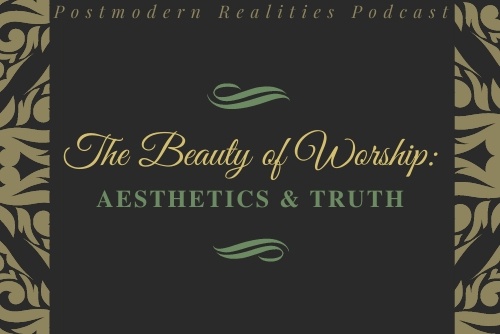What is Christian worship? Does the substance, sufficiency, and effect of worship hinge upon the emotions of the participants? God’s presence in Christian worship does not hinge on subjective experience. God is the author of beauty and yet earthly beauty fades. The human soul yearns for eternal beauty. Ancient forms of worship, often eschewed as dead ceremonies by moderns, employ the beauty of earthly things to draw the soul to contemplate eternal verities. Scripture provides the model. The earthly temple was beautiful, and His heavenly temple is unspeakably and unfathomably so. In both instances, visible beauty bespeaks the majesty of the invisible God who gave His creatures physical senses.
Hymns, written prayers, vestments, candles, incense, stained-glass windows, architecture, pulpit, and table — these visibly display the invisible truth that when the church gathers, heaven and earth meet. The senses — smell, taste, touch, sight, hearing — are all drawn heavenward and become instruments by which the worshiper gives glory to God.
This Postmodern Realities episode is a conversation with Journal author Matt Kennedy about his article in the 43:1 issue, “The Beauty of Worship: Aesthetics and Truth.”
We’d also like to invite you to subscribe to the Journal. To subscribe to the Journal, please click here.
When you to subscribe to the Journal, you join the team of print subscribers whose paid subscriptions help provide the resources at equip.org that minister to people worldwide. These resources include our free online-exclusive articles, such as this review, as well as our free Postmodern Realities podcast.
Another way you can support keeping our resources free is by leaving us a tip. A tip is just a small amount, like $3 or $5, which is the cost for some of a latte, lunch out, or coffee drink. To leave a tip, click here.
Other articles and Postmodern Realities podcasts featuring this author:
Episode 184 Unity in the Body of Christ
Episode 156 The Prayers Rose Like Incense: Anglican Worship and the Normative Principle
The Prayers Rose Like Incense: Anglican Worship and the Normative Principle
